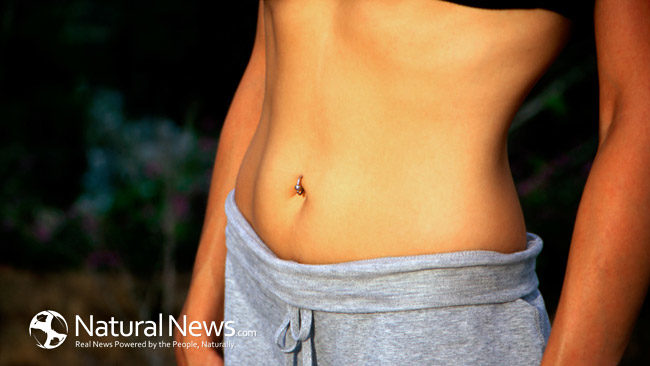The loaded question we all want the answer to is how to get a flat stomach?? We want to sculpt tight abs on our belly, but how?? Some might answer with an exercise routine targeting the mid-section, while others might say abs are made in the kitchen. A lot of this information is misleading and the concept of doing 1,000 crunches every single day has been proven ineffective.
Anatomical background
The abdominal muscles are composed of four parts:
- Rectus abdominus: This the framework of the stomach that is flat sheet of muscle located between the pubis and rib cage. When this area is well defined, having the “wash board” look, the linea alba can be seen. These are the lines that divide the sheaths of muscle. The role of the rectus abdominus is primarily muscle flexion of the spinal column and any bending motion to the side.
- Internal obliques: These muscles are found below the external obliques, so they are the muscle found more deeply attached. Their exact location is at a right angle to the external obliques, which work together in opposition. For example, when the core is rotated right, the external obliques on the left transpire this movement. They flex, side bend, and rotate the core.
- External obliques: These muscles are found on the side of the rectus abdominus. The muscles form to create a V. They flex the spine, help with side bending and with rotation.
- Transverse abdominus: These are the deepest muscles of the stomach. They wrap all the way around the torso. They actually are used for breathing, not movement.
Hip flexor misconception
The hip flexors hold our core and legs together. They help with many of our movements, especially when performing many ab exercises. Ideally, we want our ab exercises to isolate the area and be contracted for optimal results. An example of this hip flexor domination would be when performing a sit up with someone holding your feet. Most ab exercises on the back (supine) when raising the legs, are highly hip flexor involved.
Program design
Ab exercises should aim to achieve spinal flexion, extension, stability, and rotation. Spinal flexion might include the very basic crunch and even doing this on an exercise ball. Extension would be the superman (lying on the stomach slowing lifting the chest from the ground and holding 1-2 seconds). Stability is the fabulous plank hold. Rotation could be using a medicine ball twisting side to side or the bicycle move. Start with 3 to 5 sets of 12-20 repetitions and as the body adapts add repetitions and hold that plank longer.
The core is the center of gravity on our body. We can see that even our breathing is impacted by this area. Great runners have a strong core. Our balance is also critical and when the central point is well kept, the flexing, bending and rotating movement can better be controlled. Of course, reducing visceral fat will help that sheath of muscle shine through. Focus on the proper intake of macro nutrients tailored to your body’s needs based on activity level and eating habits. The core of your exercise performance lies in that central location pin pointed by the belly button on the body.
http://www.jrnlappliedresearch.com/articles/Vol9Iss3/Petrofsky.pdf








